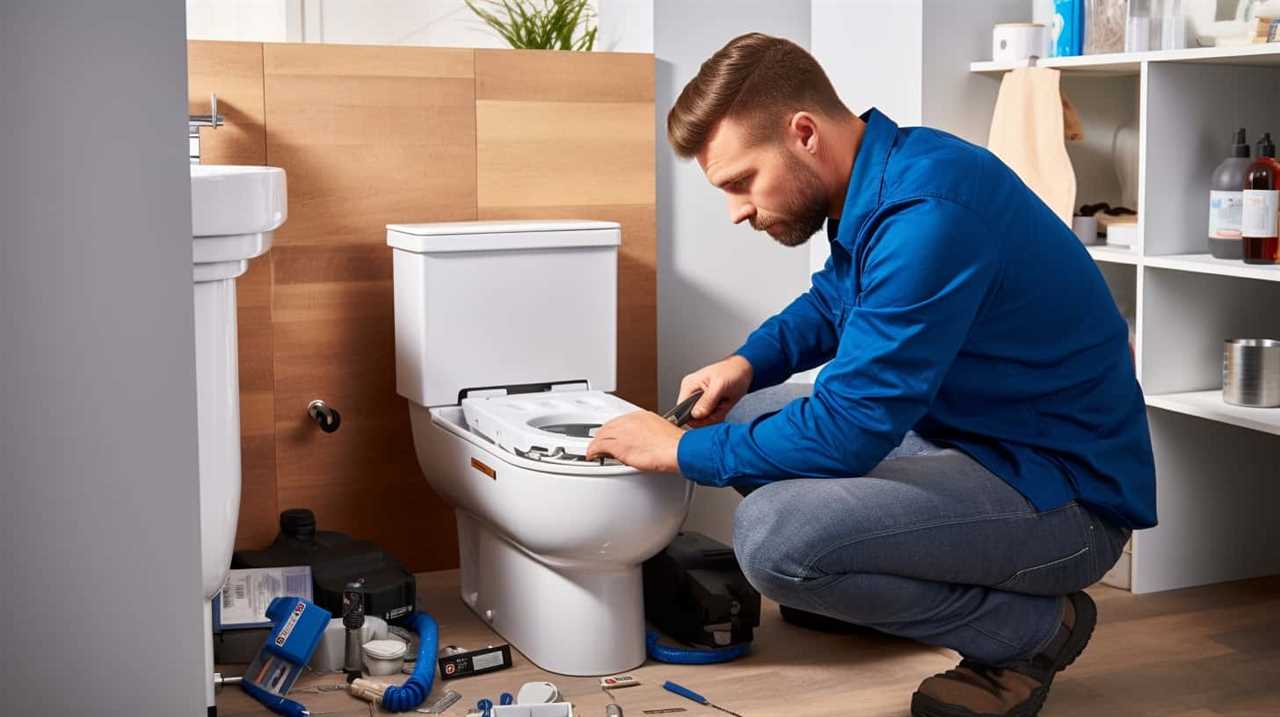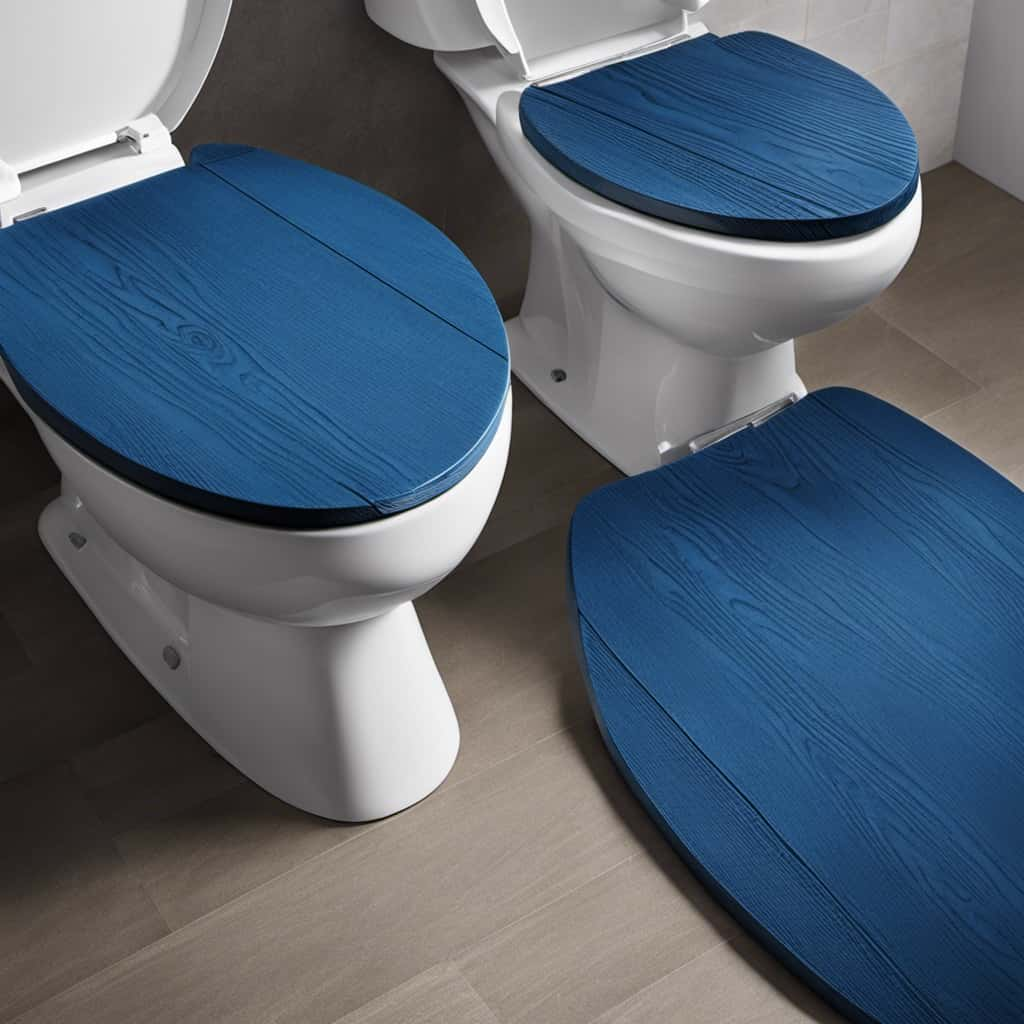We are all familiar with the phrase, ‘A chain is only as strong as its weakest link.’ In the case of our toilets, the flapper valve serves as that essential link.
A faulty flapper valve can cause leaks, wasting water and driving up our bills. But fear not! In this article, we’ll guide you through the process of replacing your flapper valve, ensuring a well-functioning toilet and peace of mind.
Let’s get started!
Key Takeaways
- Regular maintenance and inspection of the flapper valve are crucial for efficient toilet functioning.
- Signs of a faulty flapper valve include constant running water, weak flush, water leaks into the bowl, and phantom flushes.
- The tools and materials needed for flapper valve replacement are an adjustable wrench, flathead screwdriver, and a new flapper valve compatible with the toilet model.
- Benefits of a well-functioning flapper valve include prevention of leaks and water wastage, consistent and powerful flush, reduced risk of clogs, and cost savings on water bills and repairs.
Importance of the Flapper Valve
The flapper valve is a vital component of our toilets, ensuring proper flushing and preventing water wastage. Regular maintenance of the flapper valve is of utmost importance to keep our toilets functioning efficiently.

One common misconception about flapper valves is that they don’t require regular inspection or replacement. However, over time, the rubber material of the flapper valve can deteriorate, resulting in leaks and improper flushing. This can lead to water wastage and increased water bills. Therefore, it’s crucial to regularly inspect and replace the flapper valve to ensure its proper functioning.
Another misconception is that any flapper valve will fit any toilet model. However, different toilets may require specific flapper valves, so it’s essential to choose the correct one compatible with your toilet model.
Signs of a Faulty Flapper Valve
We can easily identify a faulty flapper valve by observing certain signs. Here are some common problems and troubleshooting tips to help you diagnose a faulty flapper valve:
- Constant running water: If you hear water running in your toilet tank even when it’s not in use, it could be a sign that the flapper valve isn’t sealing properly.
- Weak flush: If your toilet doesn’t flush with enough force, it may be due to a flapper valve that isn’t opening fully or closing properly.
- Water leaks into the bowl: If you notice water leaking into the toilet bowl from the tank, it could indicate a faulty flapper valve that’s allowing water to seep through.
- Phantom flushes: If your toilet occasionally flushes by itself without anyone using it, it may be caused by a flapper valve that isn’t sealing tightly.
- Short fill cycle: If your toilet tank refills frequently, it could be due to a flapper valve that isn’t closing properly and allowing water to continuously flow into the bowl.
By recognizing these signs, you can determine if your flapper valve is faulty and needs replacement.

Now let’s discuss the tools and materials needed for the replacement process.
Tools and Materials Needed for Replacement
Now let’s talk about the tools and materials we’ll need for the replacement process.
Before starting, it’s important to note that the cost of replacing a toilet flapper valve is relatively low compared to hiring a professional plumber.
The tools required for this task are minimal and can be easily obtained. Firstly, you’ll need an adjustable wrench to loosen and tighten the nuts.

A flathead screwdriver will be necessary to disconnect the chain from the trip lever.
Additionally, a new flapper valve is essential for the replacement. Make sure to choose the right size and type that’s compatible with your toilet model.
Step-by-Step Guide to Replace the Flapper Valve
After gathering the necessary tools and materials, let’s now proceed with replacing the flapper valve in a step-by-step manner.
- Shut off the water supply to the toilet by turning the shut-off valve clockwise.
- Remove the tank cover and flush the toilet to drain the water from the tank.
- Disconnect the flapper chain from the flush handle and remove the old flapper valve.
- Install the new flapper valve by attaching it to the overflow tube and connecting the chain to the flush handle.
- Turn on the water supply and check for any leaks. Adjust the chain length if necessary.
Common mistakes to avoid:

- Not shutting off the water supply before starting the replacement process.
- Failing to properly align the flapper valve with the overflow tube.
- Leaving the chain too loose or too tight, which can affect the flush.
Troubleshooting tips:
- If the flapper valve doesn’t seal properly, adjust the chain length or clean the valve and seat.
- If there’s still a leak, check for cracks in the tank or damaged seals.
Benefits of a Well-Functioning Flapper Valve
A well-functioning flapper valve provides several advantages when it comes to the efficient operation of a toilet. Firstly, it ensures that water flows smoothly from the tank into the bowl when the flush is activated, preventing any leaks or unnecessary water wastage. This not only saves water but also reduces water bills.
Secondly, a properly functioning flapper valve helps maintain the proper water level in the tank, ensuring a consistent and powerful flush each time. This eliminates the need for multiple flushes and promotes better hygiene.
Additionally, a well-maintained flapper valve minimizes the risk of clogs and blockages, reducing the need for costly repairs or professional assistance.

However, it’s essential to note that like any other mechanical component, flapper valves also have disadvantages, such as wear and tear over time, which may require periodic replacement.
Frequently Asked Questions
How Long Does a Toilet Flapper Valve Typically Last Before It Needs to Be Replaced?
To prolong the lifespan of a toilet flapper valve and determine when it needs replacement, it’s important to know how to maintain it and recognize signs of wear and tear.
Can a Faulty Flapper Valve Cause Water Leakage or a Constantly Running Toilet?
Yes, a faulty flapper valve can cause water leakage and a constantly running toilet. It’s estimated that about 20% of toilet leaks are due to a malfunctioning flapper valve.
Are There Different Types of Flapper Valves Available on the Market?
Yes, there are different types of flapper valves available on the market. These include various materials such as rubber and silicone, each with their own pros and cons in terms of durability and water-tightness.

Can a Flapper Valve Replacement Be Done Without Professional Assistance?
Yes, we can replace a flapper valve without professional assistance. It is a common DIY task. However, proper flapper valve installation is crucial to prevent common problems such as water leakage and inefficient flushing.
Is It Necessary to Replace the Entire Toilet Flapper Valve Assembly or Just the Flapper Itself?
When it comes to flapper valve maintenance, it’s important to determine whether the entire assembly or just the flapper needs replacement. Look for signs of a malfunctioning flapper valve to make an informed decision.
Conclusion
In the world of toilets, the flapper valve may seem like a small and insignificant part, but its importance can’t be underestimated. A faulty flapper valve can lead to water wastage, leaks, and a whole lot of frustration.
By replacing the flapper valve with the right tools and following a step-by-step guide, you can ensure a well-functioning toilet that saves water and prevents unnecessary headaches.

So don’t let a faulty flapper valve flush your money down the drain – take action and enjoy the benefits of a smoothly operating toilet.










